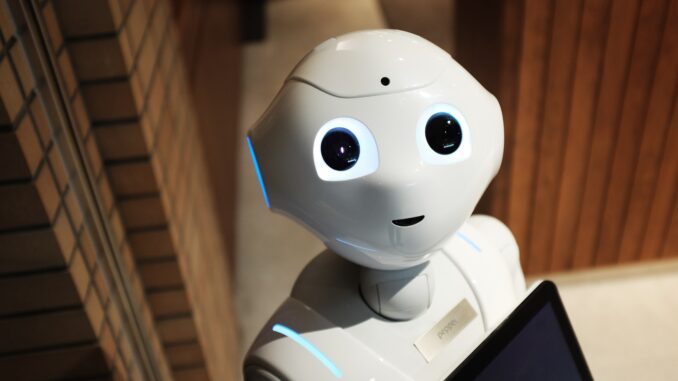
BY Karen Farrell, of Dentons
Researchers from the Universities of Bristol and Southampton have conducted a study on the effects of algorithmic management on workers, observing a trend where apps and technology are replacing human oversight in various sectors. This shift has led to a situation where some employees are hired, overseen, disciplined and even fired with little to no human interaction.
The study points out that the opaque nature of algorithmic decision-making hinders workers’ understanding of their evaluation and management, making it challenging for them to contest these decisions. Concerns have also been raised about the extensive data collection feeding these algorithms and the potential for violation of workers’ rights.
Current legal frameworks are struggling to keep pace with the issues arising from algorithmic management. Traditional employment laws, such as those concerning unfair dismissal, often do not extend protections to “workers” as a distinct category. Furthermore, discrimination laws require proof that the discriminatory behaviour was due or related to the protected characteristic, which is difficult to ascertain and prove with algorithmic systems.
To mitigate these issues, the researchers recommend a series of measures. These include ensuring algorithmic systems respect workers’ rights, granting workers the right to opt out of automated decisions such as job termination, banning excessive data monitoring and establishing the right to a human explanation for decisions made by algorithms.
Does increased use of GenAI mean job losses?
In a separate study by Nash Squared, the impact of GenAI on employment is examined. The findings report that, contrary to fears of job displacement, 99% of UK tech leaders who have adopted GenAI report no job losses. Instead, 51% are leveraging GenAI to boost personal productivity and support existing roles.
Bev White, CEO of Nash Squared, suggests that AI’s integration into businesses will be a gradual process with incremental effects. Companies which adopt GenAI extensively are even likely to expand their tech workforce. The study also points to the increasing significance of AI strategy in organisations, with a growing trend of appointing Chief AI Officers to manage AI initiatives. However, these strategies are often still overseen by chief information or technology officers.
Despite the rapid deployment of GenAI and the introduction of policies around its use, concerns about misuse are still prevalent among nearly 40% of tech leaders. While recognising AI’s potential, 55% of tech leaders have yet to identify clear business applications for GenAI beyond personal productivity enhancements, and budget constraints remain a hurdle for some.
Nevertheless, GenAI has catalysed significant advancements, such as in AI-enhanced cancer screening and machine learning applications for university fundraising. Going forward, the survey anticipates increased tech budgets and workforce expansion, with a notable shift towards more in-office workdays, which poses questions about its impact on diversity in recruitment.
Gen Z women are less likely to use AI than Gen Z men
As Gen Z comes of age in an era dominated by AI platforms like ChatGPT and Gemini AI, despite their familiarity with technology, a critical problem persists – a disparity in AI engagement between genders.
Research from Slack Workforce Lab reveals a notable gender gap in AI engagement among young adults, with men aged 18 to 29 being 25% more likely to explore AI technologies than their female counterparts. This imbalance is cause for concern, especially given AI’s significant role in reshaping how workplaces operate. Such a disparity could have serious implications for equal gender representation in the workplace, possibly obstructing the progress of women into leadership positions and widening the existing gender pay gap. Furthermore, this skewed engagement could perpetuate and even intensify gender biases in AI algorithms, which are shaped by user-provided data.
Despite the youngest cohort of workers exhibiting the most significant gender disparity in AI engagement, they also show the greatest eagerness for the technology. Slack’s research indicates that 55% of employees aged 18 to 29 are keen to employ AI to streamline their tasks, a sentiment shared by only 33% of those aged 60 and above.
Work preferences in the age of GenAI
A BCG survey sheds further light on work preferences in the age of GenAI. Overall, 33% of respondents indicated that they regularly used GenAI, particularly in office and administrative roles, to enhance efficiency. Despite 75% of employees globally anticipating that GenAI will cause workplace disruptions, workers remained optimistic about their labour market prospects. 57% indicated that they are willing to undergo retraining for new positions to maintain their career edge and 64% believe they have a strong negotiating position in job discussions.
The study highlights workers’ readiness to tackle GenAI’s potential effects by focusing on reskilling and growth, showing their preparedness for tech shifts and their confidence in succeeding within a changing job market.
The BCG survey also indicates that work preferences and deal breakers vary by region and age. For example, in North America and Europe, a poor recruitment experience is a significant factor in job offer rejection, highlighting the importance of the interview process in the overall employment experience.
Final thoughts
The studies examined offer a nuanced view of the evolving digital workplace, where algorithmic management and GenAI are reshaping the fabric of employment, challenging existing legal frameworks and influencing gender dynamics. Amidst these changes, there is a clear call for policies that protect workers’ rights and a recognition of the need for adaptability and reskilling. As technology continues to advance, it is imperative that the workforce and regulatory bodies keep pace, ensuring that the benefits of AI are harnessed equitably and justly across all sectors and demographics.
